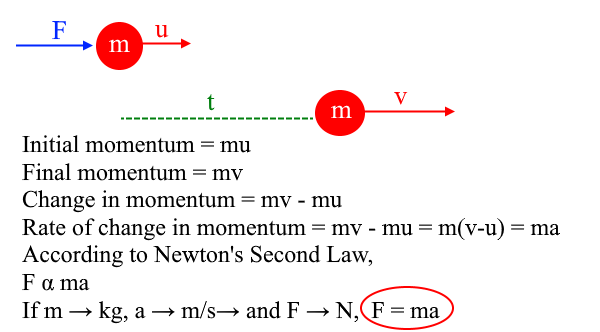Newton’s First Law of Motion
An object is either at rest or moves at a constant
speed in a straight line unless it is acted upon by an external force.
Newton’s Second Law of Motion
The rate of change of Momentum of an object is proportional
to the force that caused it.
In the above animation, the car is subjected to two
forces: driving force, D, that acts forward and the resistive force, R, the
combination of friction and drag.
When D > R, there is a resultant force, F, acting
on the car and according to the F = ma, there is a corresponding acceleration –
Newton’s Second Law.
When D = R, however, the resultant force, F, is
zero. Therefore, according to F = ma, the acceleration is zero. As a result,
the car continues to move at a constant velocity – in line with Newton’s First
Law.
Not only does the above animation illustrate Newton’s
First and Second Laws of Motion, but also shows that the two laws are
compatible.
You can play with the animation here:
Food for thought:
In certain parts of the world, where public busses
have two open doors, I have seen people jumping off the buses as they slow down
before stopping – without falling to the ground. Why do they keep running
forward for a while?
When a car starts moving forward, passengers tend to
move backward. Why does it happen?







0 comments:
Post a Comment